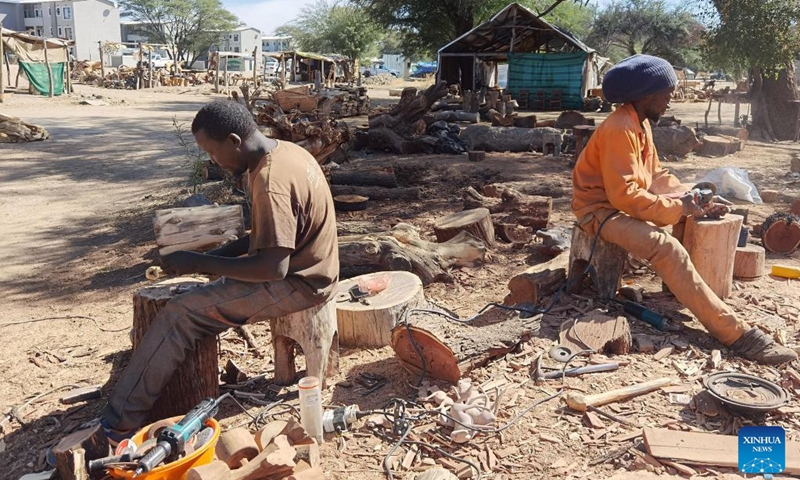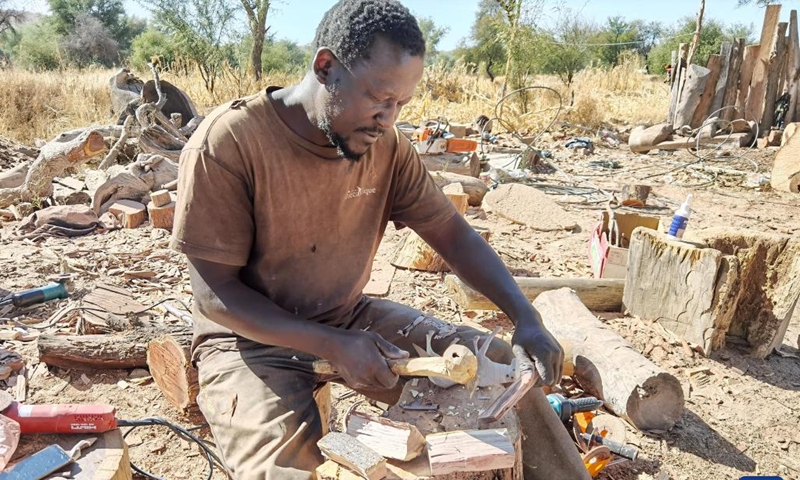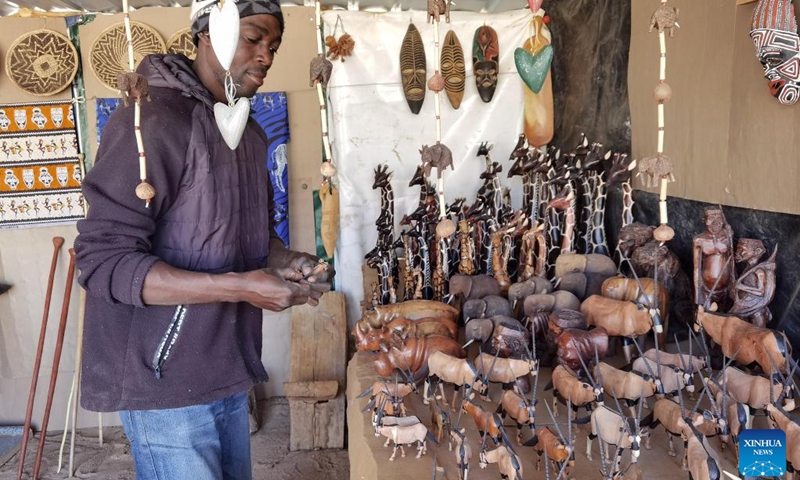
Artists work on their pieces of artworks at a marketplace in Okahandja, Namibia, on Sept. 20, 2022. Namibian artists are maximizing wood carving tradition to preserve cultural heritage and access bigger markets from an open space along the main road in Okahandja, a town 70 km north of Windhoek, the capital of Namibia.(Photo: Xinhua)

An artist works on a piece of artwork at a marketplace in Okahandja, Namibia, on Sept. 20, 2022. Namibian artists are maximizing wood carving tradition to preserve cultural heritage and access bigger markets from an open space along the main road in Okahandja, a town 70 km north of Windhoek, the capital of Namibia.(Photo: Xinhua)

An artist arranges artworks at a marketplace in Okahandja, Namibia, on Sept. 20, 2022. Namibian artists are maximizing wood carving tradition to preserve cultural heritage and access bigger markets from an open space along the main road in Okahandja, a town 70 km north of Windhoek, the capital of Namibia.(Photo: Xinhua)
Namibian artists are maximizing wood carving tradition to preserve cultural heritage and access bigger markets from an open space along the main road in Okahandja, a town 70 km north of Windhoek, the capital of Namibia.
The artists are inheritors of the time-honored wood carving craft in Kavango East and West regions in north-eastern Namibia, known as the country's native land of wood carving. The skills are carried on from one generation to another.
Over the decades, artists progressively moved to other parts of the country to explore alternative markets, such as Okahandja.
Banking on his skills, Hiipo Johannes is one of the artists from the Kavango East region now sculpting wooden products in the open space in Okahandja. Trading from the informal marketplace in the town has catapulted him into business.
"My father taught me how to carve wood into useful products and decor items. I never dreamt of commercializing the wood carving business, but exposure here changed that. The art business is now my lifeline," said Johannes in his 40s.
To date, he has created more than 5,000 products made out of wood from there. The carvings include wooden products such as plates, holders, cups, canoes, and even statues of wild animals. Products are sold to locals and overseas visitors.
It is not easy being an artist, he said. "Though the passion for wood carving is inherent, at times, sales are hard to get by," Johannes said.
To create a niche, the artists are strategic in their approach. They accord clients a chance to observe first-hand how the products are made.
"This is done for clients to fully immerse in the culture and appreciate the products they buy. Such items carry sentimental value to them," said Jack Moyo, another artist at the art marketplace, Tuesday.
The artists also employ small electric-powered machines to improve primitive woodcarving techniques by hand.
In addition, environmental preservation is central to wood carving. They source wood from local trees categorized as a weed by the local municipality.
"Not only is it cost-effective and reduces transporting of raw material, but that way, we contribute to environmental sustainability and ecosystem," Moyo said.
Meanwhile, the artists established a cooperative body that facilitates marketing and division of labor. Proceeds are shared proportionally.
"Some members sculpt the wood into art, and others market and sell the products. That way, we tap on the diverse skills to establish an effective supply chain, especially after a sluggish performance due to the COVID-19 outbreak," Moyo said.
This business model has enabled more than 50 artists operating from the open space to generate income and support their livelihood.
"Wood carving from here has transformed my life, which I would not have been able to if I remained in the village. I have been able to put my children through school and now, eke out a living," Johannes said.
They also hope to leverage social media platforms to boost business activities.
"As more tourists return after the full opening of the economy, social media will market us to reach more international clientele. We aspire to serve as a one-stop hub for handmade artwork, showcasing Namibian rich culture through art," Moyo said.
The southwestern African nation celebrates the annual Namibian Heritage Week from Sept. 19 to 25.






